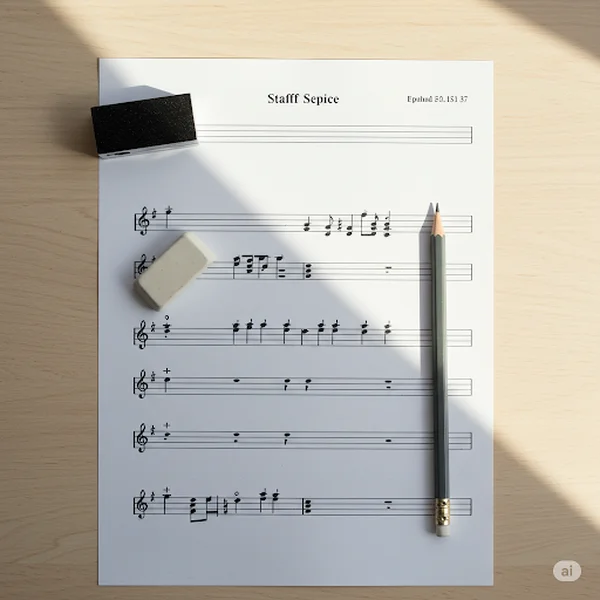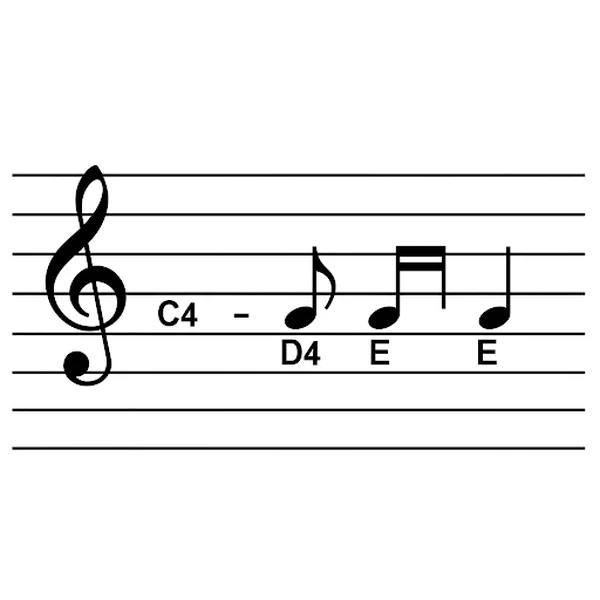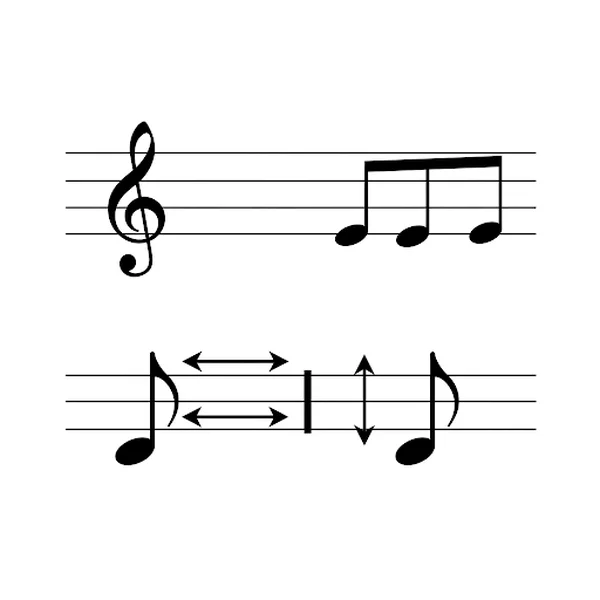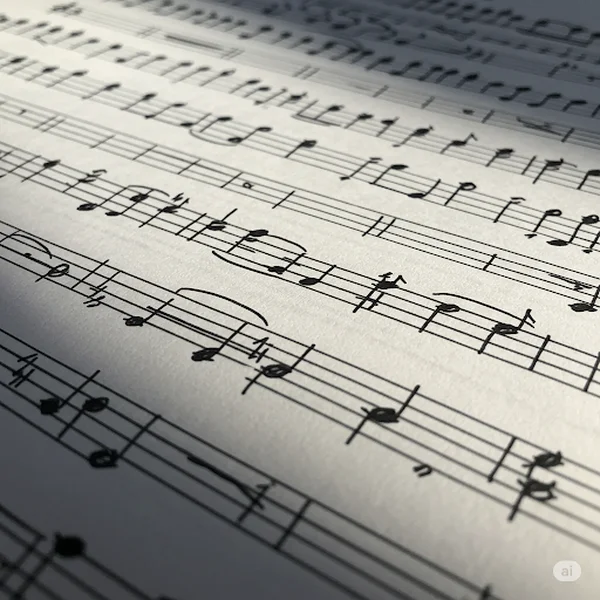Unlock Your Musical Ideas: Learn How to Write Music on Staff Paper
Have you ever wondered how to write music down, to capture those melodies forming in your head? Or perhaps you're a budding musician eager to understand the language of sheet music. Learning how to write music on staff might seem daunting at first, but this beginner's guide will walk you through the essentials of staff paper writing. What do you write on the musical staff? Essentially, it’s the roadmap for any musical piece! Ready to start your journey into music notation? You can find printable staff paper here.
Before You Start: Gathering Your Staff Paper Writing Tools
Before diving into the exciting world of music notes staff creation, ensuring you have the right tools will make the process smoother and more enjoyable. How to write music on staff? It begins with preparation.
Choosing the Right Staff Paper (Blank Staff Paper & Printable Options)
The foundation of your staff paper writing is, of course, the staff paper itself. Standard staff paper features sets of five horizontal lines. You can find various types, including blank staff paper for general use or specialized formats for piano or guitar. For convenience and to get started immediately, high-quality printable staff paper is an excellent choice. Many musicians prefer a good staff paper pdf for its clarity and ease of access.

Essential Writing Utensils (Pencils, Erasers, and Pens)
For beginners learning how to write music, a good quality pencil (HB or No. 2 is often recommended) is your best friend. It allows for easy corrections, which you'll undoubtedly make as you learn. A reliable eraser that doesn't smudge is also crucial. Once you become more confident, you might transition to using a pen for a more permanent and legible notation, but starting with a pencil is highly advised for effective music notation basics.
Understanding the Basics: The Musical Staff and Its Elements
To master how to write music on staff, you first need to understand the canvas: the musical staff. This is where all the music notes staff elements come to life.
The Five Lines and Four Spaces of Staff Paper
How many lines are on a staff paper? The standard musical staff consists of five parallel horizontal lines and the four spaces between them. These lines and spaces represent different musical pitches. The exact pitch depends on the clef used, which we'll discuss next. Understanding this five lines staff paper system is fundamental to reading and writing music.

Clefs: The Key to Reading Music Notes on Staff (Treble, Bass, etc.)
What is music staff paper called without a clef? Just lines and spaces! Clefs are symbols placed at the beginning of each staff that assign specific pitches to the lines and spaces. The most common clefs are the Treble clef (G clef), often used for higher-pitched instruments and voices (like flute, violin, or the right hand of the piano), and the Bass clef (F clef), used for lower-pitched instruments and voices (like cello, bassoon, or the left hand of the piano). Learning to draw and recognize these clefs is a crucial step in your music notation guide.
Time Signatures: Organizing Your Music Rhythms
After the clef (and key signature, if any), you'll find the time signatures. These look like fractions (e.g., 4/4, 3/4) and tell you two important things:
- The top number indicates how many beats are in each measure (the space between two bar lines).
- The bottom number indicates what type of note gets one beat (e.g., a '4' means a quarter note gets one beat). Time signatures are essential for organizing the rhythmic structure of your music.
Key Signatures: Setting the Tonal Center
Key signatures, consisting of sharps (♯) or flats (♭) placed immediately after the clef, indicate which notes are to be played consistently higher or lower throughout the piece, unless otherwise marked. They establish the key or tonal center of the music. While a deeper dive into key signatures is part of more advanced music notation basics, recognizing their placement is important for staff paper writing.
How to Write Music Notes on Staff Paper Step-by-Step
Now for the exciting part: actually putting notes onto your printable staff paper! This section of our music notation guide will show you how to write music notes on staff.
Drawing Note Heads: Placement for Pitch
What are the notes on a staff? They start with note heads. Note heads are small, usually oval-shaped marks. Their vertical position on the lines or in the spaces of the musical staff determines the pitch of the note. A note head on a higher line or space means a higher pitch, and a note head on a lower line or space means a lower pitch. Practice drawing neat, clear note heads.

Adding Stems and Flags/Beams: Indicating Duration
Once you have your note head, you'll often add stems. Stems are vertical lines attached to the note head. For notes on or above the middle line, the stem usually goes down on the left side of the note head. For notes below the middle line, the stem usually goes up on the right side. Flags (for single notes) or beams (connecting multiple notes) are then added to the stems to indicate the note's duration (how long it should be held). This is a core part of staff paper writing.
Writing Rests: The Sound of Silence in Your Music Notation Guide
Music isn't just about sound; silence is equally important. Rests are symbols that indicate periods of silence. Each type of note (whole, half, quarter, etc.) has a corresponding rest symbol indicating the same duration of silence. Learning to draw these rests accurately is vital for creating a complete musical score.
Bar Lines and Measures: Structuring Your Composition
Bar lines are vertical lines drawn across the staff to divide the music into measures (or bars). Each measure contains the number of beats indicated by the time signature. Double bar lines can indicate the end of a section, and a final double bar line (one thin, one thick) marks the end of the piece. Using bar lines helps to organize your staff paper writing and makes the music easier to read.
Tips for Clear and Legible Staff Paper Writing
Creating a score that is easy to read is just as important as getting the notes right. Here are some tips for legible notation and effective staff paper writing.
Spacing Your Notes Effectively
Give your notes and rests enough room. Crowding them together makes the music difficult to read. Try to space them proportionally to their duration – longer notes might take up slightly more horizontal space than shorter notes. This is a key aspect of good music notation basics.

Using a Pencil for Easy Corrections
As mentioned earlier, especially when you're learning how to write music, using a pencil is invaluable. Mistakes are part of the learning process, and being able to easily erase and correct them will save you a lot of frustration. You can always go over your work in pen later if you wish to create a more permanent copy on your blank staff paper.
Practice Makes Perfect: Exercises to Improve Your Notation
The more you practice staff paper writing, the neater and more accurate your notation will become. Try copying simple melodies from existing sheet music, or create your own short exercises. Focus on clarity and consistency in drawing your clefs, note heads, stems, and rests.
Start Your Musical Journey: Write Your First Piece on Staff Paper
You now have the foundational knowledge of how to write music on staff! The best way to solidify these concepts is to start practicing. Grab some printable staff paper and try writing a simple melody. Don't worry about perfection at this stage; focus on applying what you've learned.
Your Questions Answered: Writing Music on Staff Paper
Here are some common questions beginners have about staff paper writing:
How many lines are on standard staff paper?
Standard musical staff paper has five horizontal lines and four spaces. This is the common format you'll find on most printable staff paper and blank staff paper.
What's the best way to practice writing music notes?
The best way is consistent, focused practice. Start by copying simple, existing music. Pay attention to the shape and placement of each element – clefs, note heads, stems, etc. Then, try to write out simple melodies you know by ear. Using a good music notation guide and quality staff paper pdf can also help.
Can I use any pen to write on staff paper?
While you can, it's highly recommended, especially for beginners, to use a pencil first. This allows for easy corrections. If you do use a pen, choose one with a fine tip that doesn't bleed, to maintain legible notation.
Where can I find free printable staff paper for beginners?
You're in the right place! Our site offers a wide variety of free printable staff paper suitable for beginners and experienced musicians alike, including standard blank staves, piano, guitar, and more. It’s a great resource for all your staff paper writing needs.